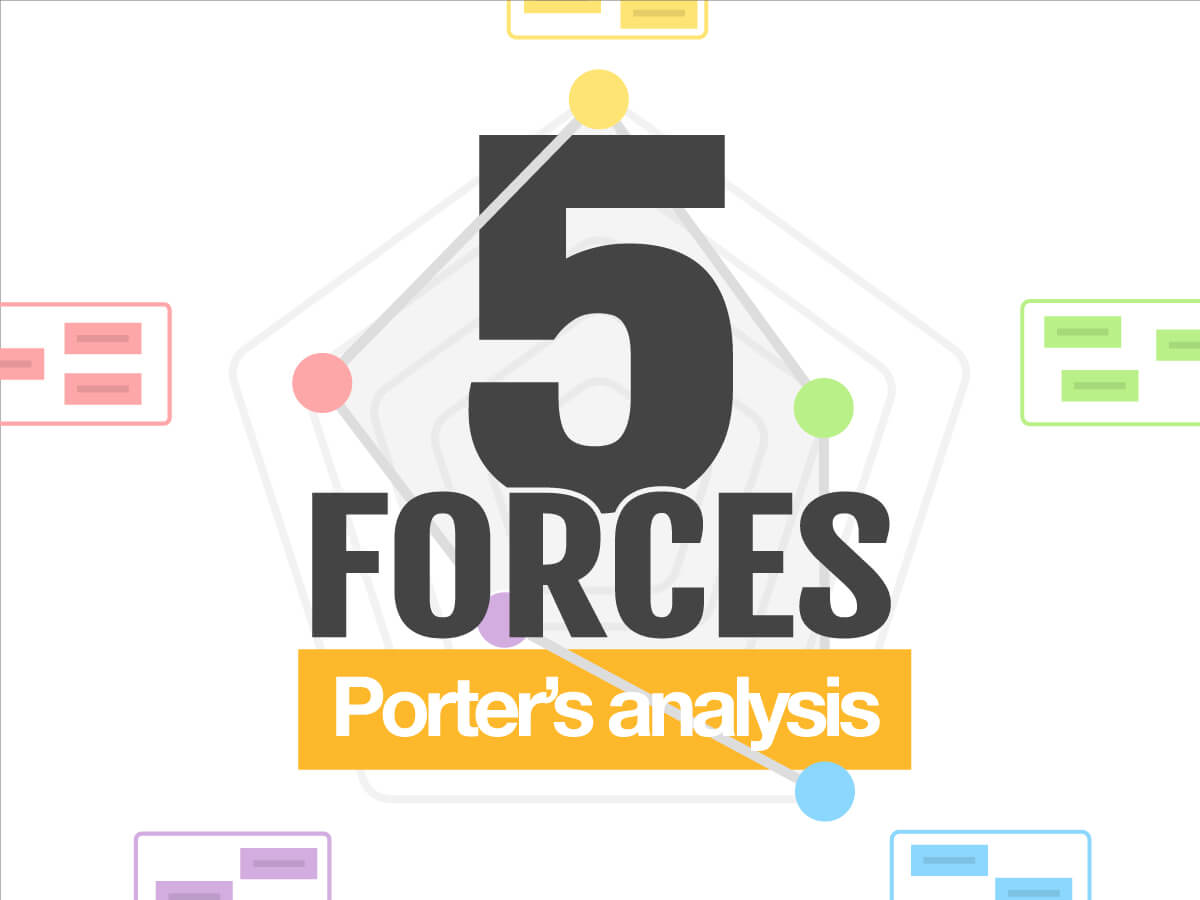Porter's 5 Forces: A visual model for easy competitive analysis
Published on September 18, 2025
Porter's 5 Forces: A visual model for easy competitive analysis


With the Porter's 5 Forces model, work as a team and analyze all the forces in your market to create the most appropriate growth strategy. After examining the 5 key forces affecting your market, prioritize their intensity to assess the overall level of competition in the industry. Then, work out the solutions together to limit the impact of the most significant forces. At the core of strategic thinking, this method helps to identify an organization's competitive advantages within its market, and create an appropriate strategy.
There are no short cuts! If you want to establish a solid growth strategy, first you need to analyze the competition, suppliers and customers and all other data available. This is the aim of Porter's 5 Forces template: visually represent the different forces that affect your market. You can then use this analysis to more easily implement strategic actions to overcome these 5 competitive forces to your advantage.

But, first of all, why “Porter's 5 Forces”? Quite simply to pay tribute to the man who developed this matrix! Porter’s 5 Forces are the result of an analysis conducted in 1979 by Michael Porter, a professor at Harvard Business School and published in the Harvard Business Review. According to this specialist, your competitive position must take into account the following 5 aspects:
All the interactions created between these 5 forces help to establish a coherent and above all profitable marketing strategy. It might be stating the obvious, but before any product or service launch, the foundation of good project management is to prepare a marketing strategy.
Using Porter’s 5 Forces template, you can work as a team to analyze supplier power, customer bargaining power, substitute products, new entrants and competitive rivalry. For each of these forces, you list the strengths and weaknesses of your project. Once you have analyzed your market, you will be able to position yourself and act on influencing factors or barriers, and find solutions to limit their impact before developing your project.


Instantly, a diagram clearly shows your position regarding each of the 5 forces.
As always with Klaxoon, your first step is to create your whiteboard and invite your entire team to log in. Once everyone is logged in, whether you’re meeting in person or remotely, you can start analyzing the Porter’s 5 Forces. The idea is to make a clear analysis of each of these forces for your business project.
Review them one by one, and submit your ideas as a Question to analyze your competitive environment. How many competitors are there in my industry? Is this product a threat to our project? How much capital would be needed to develop this project? Etc.
Be sure to use Board’s full range of features and feel free to use text, images, drawings and even links to online documents to dynamize your brainstorming session. You can use the timer at the top of your screen to limit the time to answer each question. Using visual management and ideas, everyone can confidently express their point of view. And the ideas remain accessible at any time on the Board.
Once all the Questions have been asked, you can determine the impact of each force on your business plan. And you will even be able to visualize this impact.
Again, using the Question tool, vote to determine the impact of each force. For example, by using a 5-star Rating Question: 1 star means the impact is low and the risk is limited. And 5 stars means the impact is significant, so is the risk. Once you have collected everyone's opinion, with instantly consolidated results you can instantly see the average score for each force and position.
Well done, you've used teamwork to assess the intensity of each of Porter's five forces! You have built a highly visual collaborative model that you can use to instantly identify your priority actions.
There's still more teamwork to be done: now, it's about focusing on the most significant forces.
Go back to the ideas posted by the participants on the Board about all the forces, and think about how to deal with them as a team. Remember to use the Question tool if you need to clarify something, or encourage your employees to like the most appropriate ideas by clicking on the heart button.
Then, copy the selected items to the “Let'sGo!” section below the diagram, and work together to provide solutions for every Porter’s force. Use the connectors in the toolbar to link each idea to each solution.
In person or working remotely, make sure everyone is aligned on the outlined action plan. You can then assign each action to a team member. Use dimensions in each text box to set a deadline for the appropriate actions.
The power of collaborative methods lies in their ability to unite a group around shared projects. With Porter’s 5 Forces template, your business model is clearer and your actions are better defined. This in turn increases your ability to resolve problems.
Your project management is made easier thanks to a vital, collaborative analysis of the 5 competitive forces in your market!
Get inspired by other templates from the same categories
Unlock your teamwork potential